Following 2020 when no Group trapping was possible because of covid and it was only possible to have five traps from June onwards in 2021, we appreciated being able to conduct a full programme of nine traps in 2022. The trapping is conducted at various venues, usually people’s gardens, publicised in advance over the period April to October.
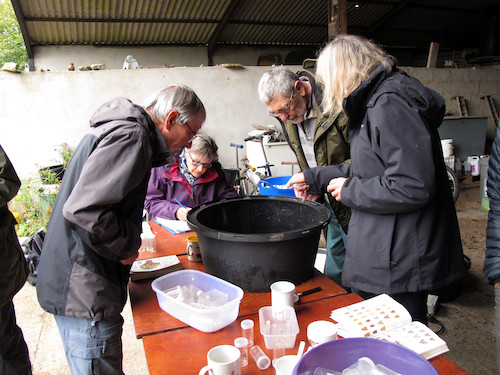
Trap at Elm Farm © Geoff Hiscocks
For those unfamiliar with moth trapping, the traps basically consist of a bright light to attract the moths and a container in which the moths settle on egg boxes. They are set up the evening before and stay on all night. Members then gather the next morning at 9am.to observe the moths removed for identification and recording before being passed around for all to see. At the end of each session, any moths which haven’t already flown off, are released onto nearby shrubs and trees.
The season got underway with the usual social event in the hall at Compton Dando at the end of February. We enjoyed Richard Pooley’s presentation on this occasion, knowing that he had been ill for some time. Early in May we heard that Richard, our dear friend for many years, inspiration and fount of all knowledge had passed away on the 30th April. He has been and will be sorely missed by all Nats and moth group members.
Our first trap of the year was hosted by Lis Allen at Winsley on April 22, with 13 species, including Early Grey, Brindled Beauty and Yellow -barred Brindle. 13 members were present to get the season off to a good start.
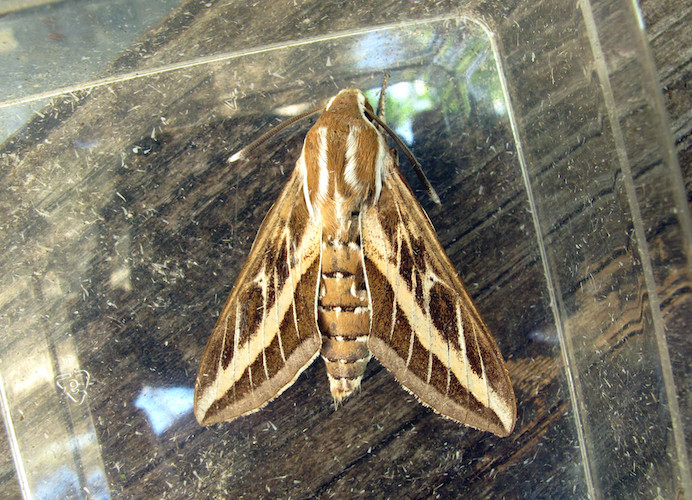
Striped Hawkmoth © Geoff Hiscocks
Philippa Paget hosts our traps at Elm Farm , near Keynsham and three such events took place there this year : at the end of May, in August and at the beginning of October. We used the May occasion to remember and pay tribute to Richard and several members present shared photos, anecdotes and comments etc. with reference to him at a place where he helped Philippa with so much trapping. 27 Spring species were recorded this time but of particular interest were two ‘guest’ moths (those brought by members to the event from their own gardens/traps).
Paul Wilkins contributed a large and active Oak Eggar larva while John Aldridge brought a handsome Striped Hawkmoth.
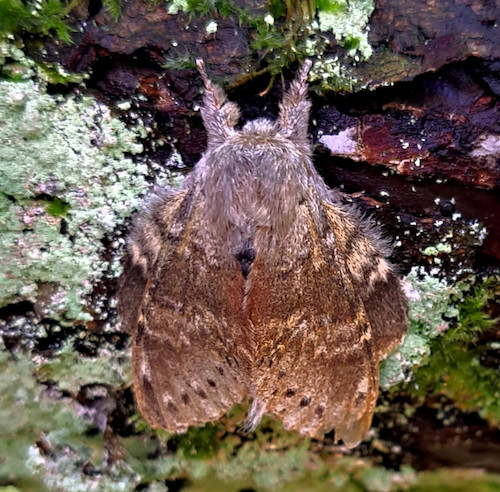
Lobster Moth © Les Mears
Our first June trap was in the gardens at Great Chalfield Manor, Melksham courtesy of Robert Floyd and Maurice Avent on the 15th. White Speck, an immigrant and resident, with Gold Spot were two moths of particular interest. There is always a good selection of moths at this venue. Also in June (on the 30th) Mike Bailey had set traps at Chew Valley Ringing Station and although there was a heavy downpour early evening the total number of species recorded was 50. Lobster moth and Short- Cloaked moth were favourites of some members.
We were at Maurice Avent’s garden in Biddestone in mid July and the variety of species was considerable. Miller, Pine Hawkmoth, White Satin and Kentish Black Arches were interesting, some of the traps having been set in nearby West Yatton Valley the previous evening and then brought up to his house on the day for inspection .
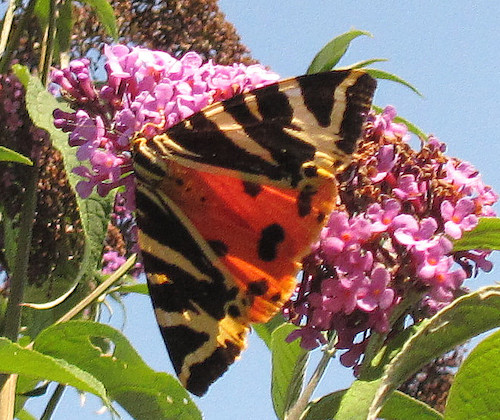
Jersey Tiger © Geoff Hiscocks
The Compton Dando trap/s at the home of Jenny Thomas are always a highlight of the season and did not disappoint this time on the 13 August. 73 species were recorded and gave everybody plenty to think about! There were 80 Water Veneer and 76 Small Square Spots for example. Although there were only 2 Jersey Tigers in the traps, one was noticed nectaring on buddleia elsewhere in the garden, ideal for a photograph.
A special trapping, the second of the year at Elm Farm, was arranged and then opened on 21 August. It was organised as an introductory session for Nats members with little or no previous knowledge of moth trapping who might consider joining the Group. We valued the opportunity to explain what the process is all about and the considerable interest in the moths recorded will hopefully lead to some new members for the Group.
Another special trapping took place on 10 July at the American Museum and Gardens. Non-mothing Nats members were encouraged to come along, as were members of the public, and museum staff and volunteers. A very successful morning with 125 species, reported separately. We hope to repeat the event in 2023.
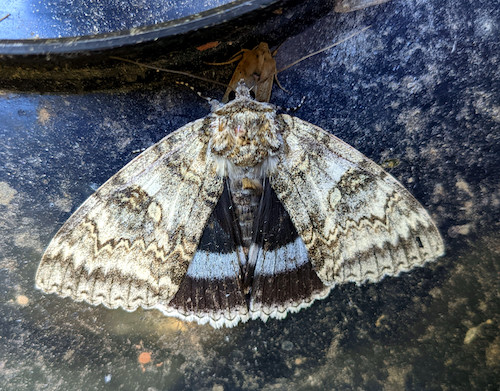
Clifden Nonpareil © Helena Crouch
The season finished with traps at the home of Helena Crouch in Paulton on 23 September and the trap at Elm Farm on 2 October. The striking feature of Helena’s two traps were the presence of three Clifden Nonpareils, two in one trap and one in the other. This moth is still relatively uncommon but becoming less so in recent years. Helena was rewarded with a good attendance and nearly 30 moth species – but the highlight for everybody was the Clifdens.
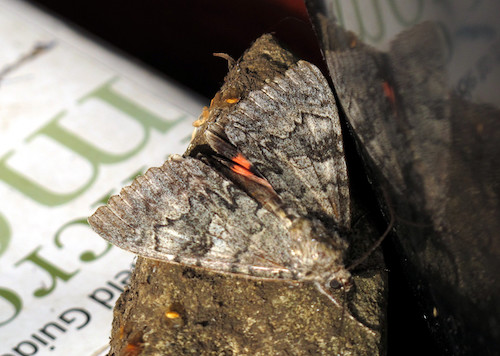
Red Underwing © Geoff Hiscocks
The Elm Farm trap also yielded a Catacola species, this time a Red Underwing.Also noteworthy were the 5 Deep- brown Darts, a moth many of us had not encountered (or even heard of !) until this year. It is easily confused with faded Black Rustic. Yellow-line Quakers were the first of the Autumn for many of us.
This was the final trap of 2022 and I’m sure members will join me in thanking Philippa Paget and the other hosts at the various venues this year, Mike Bailey and Maurice Avent for their technical assistance and Carole Catling for her organisation and implementation of the trapping schedule.
Geoff Hiscocks

Recent Comments